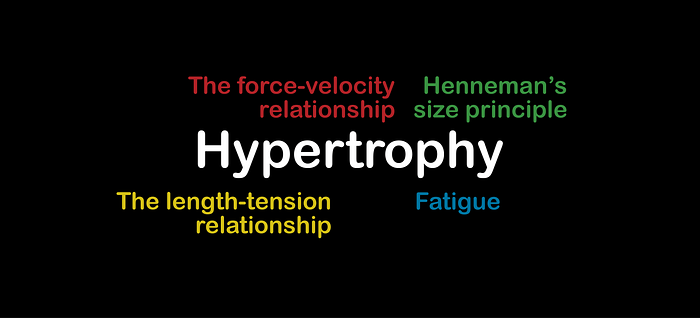When is “high volume” training not actually high in volume?

If you enjoy this article, you will like my second book (see on Amazon).
Lifters often talk about using blocks of “high volume” training to enhance muscle growth. However, the research definition of volume and the common understanding of volume are quite different, and the reality is that most “high volume” training programs are not high volume, they just require a lot of reps to complete.
In fact, the number of reps you do in a workout has nothing to do with the volume that stimulates muscle growth. If that were the case, then aerobic exercise would trigger the most hypertrophy, being the type of exercise that involves the most reps, by a long way.
To understand this problem fully, let’s look closely at training volume.
How do researchers define training volume?
Training volume is the way in which we measure the size of the dose of a strength training program. Greater volumes provide a larger dose of training, and produce a greater stimulating effect for the fibers of the trained muscle to increase in size.
Training volume is measured in a number of ways by researchers, including (1) the total number of sets to failure, (2) the total number of reps (sets x reps), and (3) the volume load (sets x reps x weight).
Critically, studies have only linked the number of sets to failure to a dose-response on muscle growth. Only when measured in this particular way, do greater volumes (number of sets to failure) lead to more hypertrophy. And there is good evidence for this finding. Yet, when measured in either of the other two ways (total number of reps or volume load), there is no relationship *whatsoever* between volume and the amount of hypertrophy that occurs after training. Unfortunately, the exact opposite is often mistakenly stated by strength coaches, strength training experts, and even some researchers!
For example, when two groups of strength-trained individuals perform similar training programs using 3 sets of the same 7 exercises to muscular failure but with either light loads (25–35RM) or moderate loads (8–12RM), they achieve the same amount of hypertrophy, and yet training with lighter loads involves far more volume (sets x reps) and volume load (sets x reps x weight) than training with moderate loads.
Similarly, the relationship between training volume and hypertrophy also disappears when we do not take sets to failure. This can be seen when comparing training programs of light and moderate loads with the same volume load, where failure is not reached. In such studies, strength training with a moderate load leads to much greater muscle growth than light loads.
There is a very good reason why this must be the case.
What is volume really?
To create muscle growth, we need to bring about (1) the recruitment of high-threshold motor units (and the activation of their muscle fibers), and (2) a slow shortening velocity.
We need to recruit high-threshold motor units for two reasons. Firstly, despite being quite few in number, they actually control the large majority of muscle fibers. Secondly, the very slow twitch muscle fibers that are controlled by low-threshold motor units are not very responsive to the workout stimulus, and tend not to grow after training. Recruitment of high-threshold motor units is determined by the effort involved in doing a movement. When we lift a heavy load, or move a light load explosively, or lift a light load to muscular failure, we use a high level of effort, so motor unit recruitment is high.
However, simply recruiting the motor units (and activating their fibers) is not enough. We also need to expose the activated muscle fibers to high levels of mechanical loading. This is accomplished by the force-velocity relationship. When the activated muscle fibers shorten slowly, they produce a lot of force, and therefore experience high levels of mechanical loading. When the activated muscle fibers shorten quickly (as in very fast movements), they produce little force, and experience little mechanical loading. This is why lifting light loads explosively without incurring fatigue involves maximal motor unit recruitment but does not stimulate muscle growth.
Importantly, the final reps of a set taken to failure involve similarly high levels of motor unit recruitment and similarly slow bar speeds due to increased local muscular fatigue, regardless of the weight on the bar. Therefore, in every set to failure with any load, the muscle fibers controlled by high-threshold motor units experience approximately the same number of stimulating reps. This is why the number of sets to failure is a good way of measuring training volume, regardless of the weight on the bar.
Given that heavy loads (1–5RM) cause hypertrophy without the need for fatigue, it seems likely that the final five reps of a set to failure can be defined as stimulating. The true number might be slightly smaller or slightly larger, and it might differ between individuals and muscles. In fact, it is likely to be quite a bit larger in completely untrained lifters, because they have far more motor units with muscle fibers that have not yet reached a plateau in size. Nevertheless, the final five reps of a set to failure is likely a fair benchmark, and we can therefore deduct reps when using RIR to identify the real training volume in each set. Training with 1RIR on each set involves four stimulating reps, training with 2RIR involves three stimulating reps, and so on.
When are “high volume” training programs not high volume?
Whether a training program is called “high volume” in the fitness industry tends to revolve around whether it involves a large number of sets and/or reps, and this description often ignores the proximity to failure.
Therefore, we often have the strange situation in which training programs are called “high volume” when they don’t incorporate very many stimulating reps. In many ways, they share more in common with endurance exercise than with strength training.
For example, when training with 5 sets of 10 reps with the same weight with the squat or bench press, taking 5 minutes rest between sets, and aiming to reach failure only on the final set, the proximity to failure is 7RIR on the first set, 4–5RIR on the second set, 3RIR on the third set, 2RIR on the fourth set, and 0RIR on the final set. The total number of stimulating reps is 10 or 11, which is smaller than you would achieve by doing 3 sets of 5 reps to failure.
Similarly, studies of German Volume training are often cited to show that moderate and high volume training programs cause similar muscle growth. Commentators often suggest that this can be used as evidence for a plateau in hypertrophy after reaching a certain number of sets. While I do agree there is an upper limit (i.e. you can’t keep increasing volume and thereby increasing the hypertrophy that results from a workout indefinitely), these studies are not good evidence, because each set was not taken to failure. Also, a fixed RIR was not used. Instead, the same number of reps were done in each set, with a given percentage of 1RM. Therefore, is hard to count how many stimulating reps were done by each group (and each lifter, as the number of reps that a person can do with a given percentage of 1RM varies a lot).
Recently, a study was done that was described as “extreme volume” because the number of sets (and reps) was very high. Strength-trained subjects did 3 workouts a week for 6 weeks (Monday, Wednesday, Friday). Each workout involved 4 exercises (back squat, bench press, stiff-leg deadlift, and lat pull-down) for multiple sets of 10 reps with 60% of 1RM (based on 3RM testing). The exercises were done in a circuit fashion with 2 minutes of rest between exercises and sets, which would have reduced local muscular fatigue quite considerably. Mondays and Fridays, volume was increased over the 6 weeks from 4 sets per workout to 12 sets per workout (4, 6, 8, 10, 11, and 12 sets). Wednesdays, volume was increased over the 6 weeks from 2 sets per workout to 8 sets per workout (2, 3, 4, 4, 6, and 8 sets). The number of sets per exercise per week was therefore 10, 15, 20, 24, 28 and 32 sets.
Average RIR each week in each workout was: 3.7, 4.2, 4.5, 4.5, 4.5, and 4.5. Taking the weighted average of these RIR values across all of the exercises over the whole program gives 4.4 RIR, which is 0.6 stimulating reps per set. Thus, the average number of stimulating reps per workout for each exercise was 2, 3, 4, 4.8, 5.6, and 6.4 reps, which is less than a single set to failure at the start of the program and a lot less than two sets to failure. This could explain why the muscle thickness increases seemed quite small after training (biceps = 2.3%, effect size = 0.17; vastus lateralis = 2.3%, effect size = 0.13) and the changes were only significant after adding the two pre-to-post increases together (these data are shown in the supplementary tables). Similarly, there were only very small and non-significant pre-to-post increases in muscle fiber size (by 4%), as measured by vastus lateralis biopsy.
As an aside, it is feasible that we might expect some reductions in muscle size after the final couple of weeks of the training program, because of the large number of reps causing severe muscle damage that requires not just repair but regeneration, thereby causing the transitory loss of muscle volume. Such a loss would be expected to (largely) return after several weeks, but the overall impact is likely to be very tiny in the overall scheme of things.
Ultimately, we are inevitably going to see some unexpected results like this, if we persist in arbitrarily labeling any strength training program that involves a large number of sets and/or reps as “high volume” training. The only way to avoid such confusion is to count the number of stimulating reps in each set, at which point everything becomes a lot clearer. In the above study, what was described as an “extreme volume” training program was actually quite low in stimulating volume, in much the same way as a 5km run is low in stimulating volume. While both include a lot of muscular contractions, neither are going to stimulate a huge amount of muscle growth.
What is the takeaway?
High volume training programs are only high in volume if they contain a large number of stimulating reps. Training programs that contain large numbers of sets and/or reps are often not high in volume when the reps in reserve (RIR) on each set is high. To assess the amount of volume in a training program, we have to count the number of stimulating reps, and not just the total number of sets and/or reps.
If you enjoyed this article, you will like my second book (see on Amazon).
